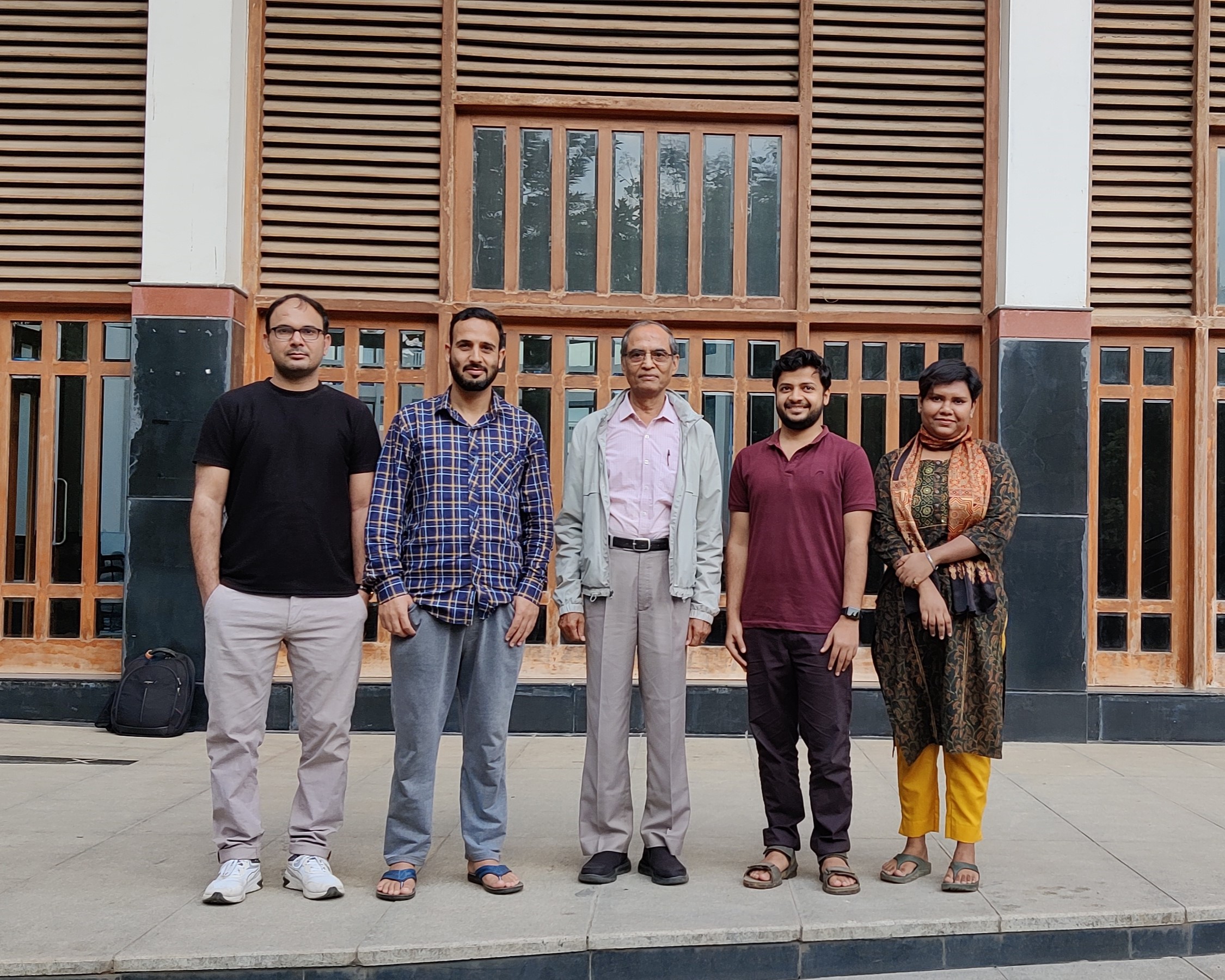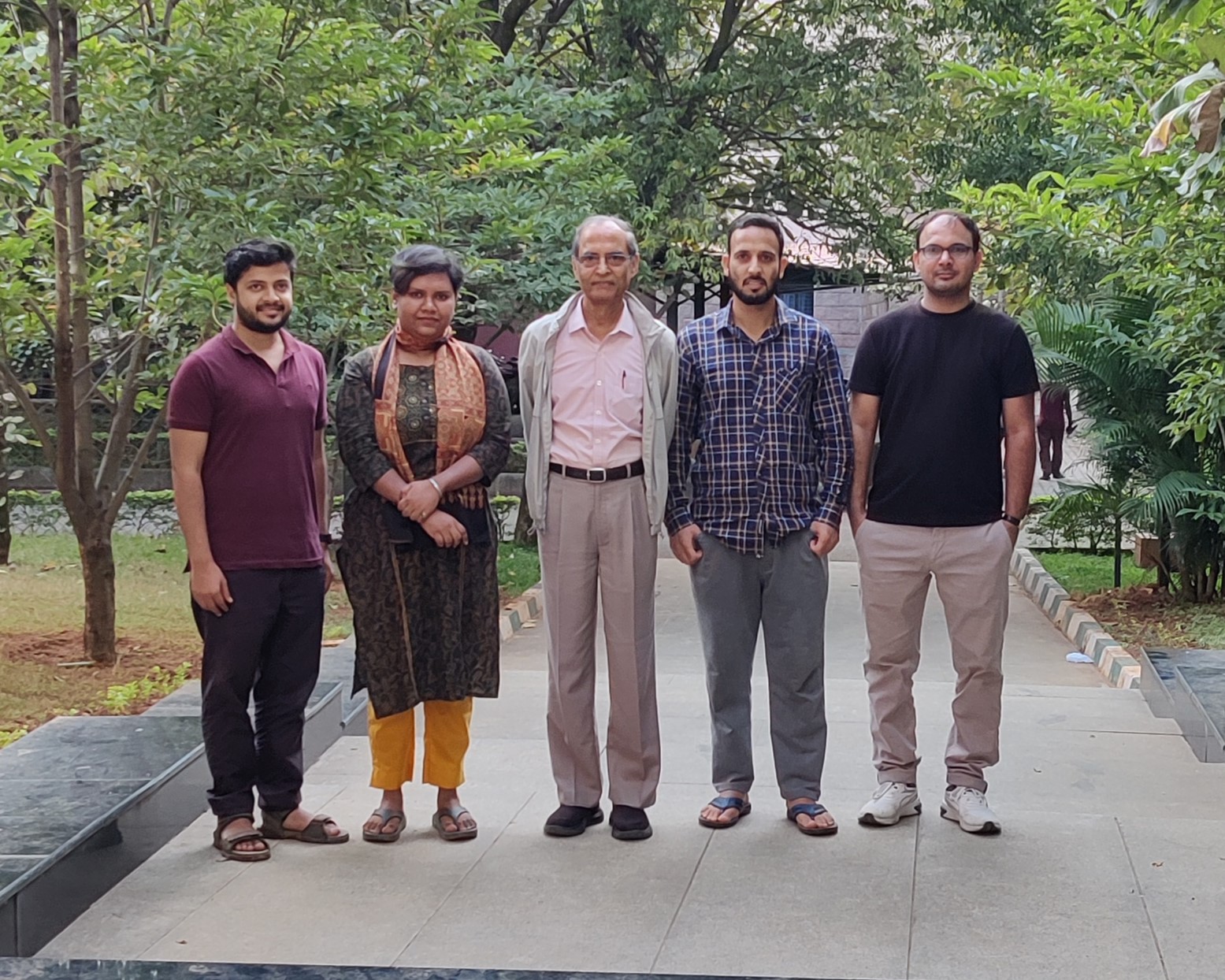Welcome to the Research group of E. D. Jemmis. We study the structure and reactivity problems of real life molecules, clusters and solids using theoretical techniques ranging from the simplest of molecular orbital methods to the sophisticated electronic structure theory depending on the system at hand and thequestions that are to be answered. Special emphasis is placed in weaving threads between problems in one area to another; between polymorphs of elements and their compounds, between organic and organometallic chemistry, amongst the chemistry of various main group elements; Bonding, Structure and Reactions across the Periodic Table of Elements. We place great importance in not only getting numbers as an answer to a problem, but also in finding out why the numbers turn out the way they do, based on overlap of orbitals, perturbation theory, and symmetry, and in devising transferable models.
The attempt by the Jemmis group is not just to get some calculations and a specific answer, nor to work in a contemporary area where many scientists work, but to develop general understanding of a transferable nature in a chosen area to help further the thought processes in chemistry. This has always led to applications in material science and biology. Majority of his former students work in material science or computaional drug design and molecular modelling.
Opportunities exist for students in doing research in computational chemistry in these areas (see google scholar) in the group and in collaboration with other faculty members of IISc. These could have an experimental component as well. Students may contact me if interested.
Recent Results:
-
In our recent book chapter(Borophenes: Insights and Predictions From Computational Analyses), the contemporary theoretical advancements, which led fundamental contributions in understanding the structural chemistry of two- dimensional boron phases are discussed.
-
Despite the tetravalent arrangement of atoms around silicon, aromaticity has been confirmed in the three-membered ring of disilaborirane on our paper (Angew. Chem. Int. Ed. 2020, 59, 23015-23019). Here, we presented a systematic design principle to use pseudo π* orbitals on Si along with the vacant p orbital of B for π bonding in collaboration with Prof. Herbert W. Roesky from University of Göttingen, Germany.
-
Our recent results (Organometallics. 39 (2020) 1700-1709) explores the detailed mechanism of isocyanide coupling reaction mediated by Cr-Cr quintuple bond. It shows how barriers for minimum energy crossing points (MECPs) and for different transition states control the experimental product distributions.
-
Is it possible to find a specific reaction that spans the four blocks of the periodic table so that more insight is obtained on the issue? Our article in Dalton Trans. (Dalton Trans. 49 (2020) 5157-5166) addresses this issue by focusing on a particular class of molecules, di-acetylide bridged bimetallic complexes [L]M(µ-CCR)2M[L] and their C-C coupled products [L]M(µ-RC4R)M[L].
-
Our recent results (Angew. Chem. Int. Ed. 58 (2019) 17684-17689) shows how transition metal template stabilizes classical [B2H5]- unit in [(Cp*Ta)2(μ,η2:η2-B2H5)(μ-H)(κ2,μ-S2CH2)2] in collaboration with Prof. Sundargopal Ghosh's group, IITM.
-
The planarization of polyhedral borane skeleton BnHx on removal of hydrogen atoms is faster for smaller polyhedra. Our recent results (Inorg. Chem. 58 (2019) 3627-3634) showed that overlap of radial dangling orbitals controls the planarization process.
-
Our article in JPCC (J. Phys. Chem. C. 122 (2018) 2268-2274) showed how structure of borophene phases could also be tuned by modulating the parameters such as boron source or the metal templates, in addition to the substrate temperature and boron atom deposition rate.
-
In addition to the all existing explanations for agostic interaction, our results in J. Organometal. Chem. (J. Organomet. Chem. 865 (2018) 37-44) probed yet another important aspects, how the nature and arrangement of the ligands around the metal center influence the origin of ßagostic interaction in d0 transition metal alkyl complexes.
-
Our article in PCCP (Phys. Chem. Chem. Phys. 20 (2018) 25792-25798) showed the electron scavenging power of halogen bond donors shortens and strengthens the bridge bond of [1.1.1]propellane and the open form of [2.2.2]propellane. This answers the seminal question raised by K. B. Wiberg in 1983, "how can one have a relatively 'strong bond' without much bonding character?"
-
The sp3 hybridization and localized bonding of carbon atoms in carbon nanothreads (CNTs) are expected to make them stiff materials. Our results in JPPC article (J. Phys. Chem. C. 122 (2018) 7945-7950) highlights that adamantane-derived carbon nanothreads showed desired structural stability and mechanical strength.
-
The inherent tendency of boryrlene fragments to undergo coupling is summaraized in our article in Chem. Eur. J. (Chem. - A Eur. J. 24 (2018) 17844-17851).
-
Our Chem. Eur. J. paper Chem. Eur. J. 2017, 23, 9746-9751 showed that Incorporation of a group IV metal fragment ZrCp2 into a borocycle is an effective strategy to stabilize a B-B triple bond in a cyclic system. The characteristic donor-acceptor bonding feature in metallacycloboryne contrasts with the carbon analogues.
-
The inevitability of holes on borophenes and borospherenes are recently investigated. Using molecular dynamic simulation techniques, we demonstrated the precise structures for borophene phases obtained on Ag surface in our Angew. Chem. article Angew. Chem., 2017, 56, 10093-10097. While growth temperature controls the density and distribution of holes in borophene, we found that in 3D, symmetry and stability of unit cell varies dramatically depending upon the partial occupancies. The new boron allotrope denoted as tau-boron is one such consequence. Our fragment approach revealed the electronic structure for this form Phys. Rev. B, 2017, 95, 165128.
-
Electron saturated transition metal complexes of groups 3-10 show reluctance towards weak metal-bond formation. An electronic structure reason for this observation has been provided by us in a recent Inorg. Chem., 2017, 56, 1132-1143 paper. Our quantum chemical claculations recently published in Chem. Commun. 2017, 53, 8168-8171 unveiled a hitherto unexplored multifacted application of halogen bonding as an electron scavenger.


